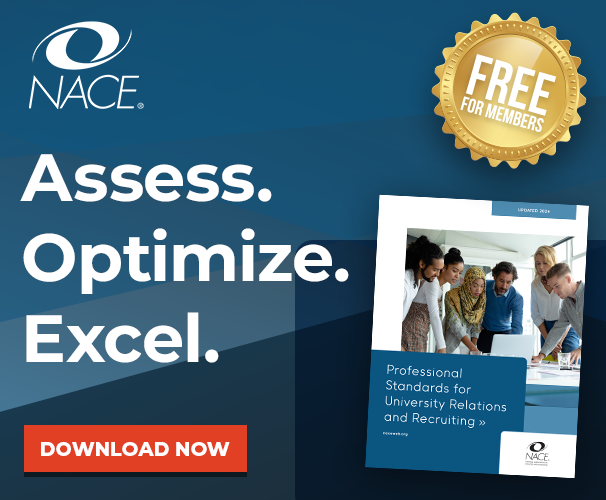The 2022 midterm elections brought many surprises. While we still don’t know all the winners and losers, we do know who the key decision-makers will be and what we expect their priorities to be related to higher education and the workforce. We also have insights into how young people showed up during the election and how they voted. In this article, we share some early thoughts on the 2022 midterms—what the preliminary data illustrate about young voter turnout, along with the potential policy impacts going forward.
Young People and Voting
Young voters, ages 18 to 29, turned out to the polls in significant numbers for the 2022 midterms. According to the Center for Information & Research on Civic Learning and Engagement (CIRCLE) at Tufts University, 27% of young people voted in the 2022 midterm elections. This is the second highest turnout by young voters in the past 30 years. Moreover, CIRCLE estimated that, in the battleground states (FL, GA, MI, NC, NH, NV, OH, PA, WI), young people showed up in even greater numbers, with the aggregate youth voter percentage standing at 31%.
CIRCLE further found that the youth vote helped to sway election outcomes in several battleground states. For example, in the Pennsylvania Senate race, Democrat John Fetterman earned 70% of the voters between ages 18 to 29, while Republican candidate Mehmet Oz captured just 28% of the youth vote in the state. In contrast, Fetterman was supported by 55% of voters between 30 and 44 years old and Mehmet Oz dominated among voters ages 45 and older.
Similar trends in other battleground states demonstrate that the youth in the midterms went overwhelmingly Democratic, mirroring the 2020 election. CIRCLE researchers further found that across categories of race, differences certainly emerge. In the 2022 midterms, 89% of young Black voters and 68% of young Latino voters opted for a Democratic candidate for the House of Representatives, as compared to 58% of young white voters.
Young people as a voting block also have differences within their demographic when it comes to policy support. Research from Ignite found that the overall the top five policy priorities for Gen Z (those born after 1996) are healthcare for all, mental health funding, allowing immigrant children to become citizens, forgiving student loan debt, and abortion rights. However, when we look across gender and sexuality, Ignite researchers found that cisgender Gen Z men rate inflation, healthcare, and mental health as the top three issues, while cisgender Gen Z women, transgender respondents, and gender non-conforming respondents rated healthcare, mass shootings, and mental health as the top three issues.
A deeper dive into the trends around youth votes in the midterm elections by level of education will be available later in the year, but insights from the 2018 and 2020 elections indicate that college students tend to have much higher voting rates than the overall youth. According to the Institute for Democracy and Higher Education, 40% of college students voted in the 2018 midterm, while the overall youth voting rate stood at 28% percent. The higher voter engagement by young people who are enrolled in college also demonstrates the role of higher education institutions in promoting civic engagement. However, there are differences within the college student vote. Looking at voting patterns by race and gender from 2012 to 2018, female students tended to turn out to vote at rates higher than male students; and Black and white students have higher voting rates than Asian and Hispanic students. Black women college students had the highest average turnout from 2012 to 2018, followed by white women, white men, and Hispanic women. These differences highlight the importance of deeper understanding of young people and voting across education, race, and gender.
In addition to turning out as voters, young people also put themselves forward as candidates. There were at least four Gen Z candidates who ran in the primaries and general election. Maxwell Frost, a 25-year-old Democrat from Florida, will be the first Gen Z member of Congress in 2023.
Congressional Insights and Priorities
What will the new Congress look like? The U.S. House of Representatives will flip to a Republican majority, and we will return to a divided government. This will be a significant change since the majority party sets the agenda for each committee, including what topics and legislation will be considered and what witnesses they invite to testify. They also control the House floor schedule, including what bills will be brought to the House floor for consideration. House Republicans will also likely change the name of the House Education and Labor Committee back to the House Education and the Workforce Committee. It is not clear who the committee chair will be. Current ranking member Virginia Foxx of North Carolina chaired the last time Republicans were in control and would like to resume her position. However, due to Republican term limit rules, she may not be able to. She has requested a waiver, but has not yet received approval. If she cannot get permission, Tim Walberg from Michigan or Jim Banks from Indiana will likely become chair. The current chairman, Bobby Scott of Virginia, is expected to stay on and become the ranking member.
No matter who takes the helm, we know that a critical priority for Republicans will be oversight of agency activities and regulations that have taken place under the Biden administration. Recent communications from Republicans to Secretary of Education Cardona indicate that we can expect hearings on how much the public service loan forgiveness program is costing taxpayers, an investigation of the legal authority of President Biden’s student loan forgiveness program, and how pandemic relief was spent in schools. In “Commitment to America,” Republicans also included bolstering parental rights in schools; Title IX changes, particularly the reinterpretation of the law to protect gender identity; the promotion of free speech on college campuses; and the question of the scope of academic freedom in public institutions. We can also expect Republicans to find ways to draw attention to the Department of Education’s new borrower-defense rules and the upcoming gainful-employment rules. Workforce issues and college affordability will remain high on the agenda. This will likely include discussions surrounding the role community colleges play in meeting the needs of employers and revisiting the idea of establishing Pell grants for short-term training programs.
On the Senate side, current Chair Patty Murray is leaving the Senate Health, Education, Labor, and Pensions (HELP) Committee to chair the Appropriations Committee. Her Republican counterpart, Senator Burr (R – NC), is retiring. This leaves two committee leadership openings. Senator Bernie Sanders of Vermont is expected to be the new chairman, and Senator Bill Cassidy of Louisiana will be the lead Republican on the committee. Senator Sanders has been a vocal supporter of increasing access to higher education; he has advocated for free college for all, canceling student debt, and increasing federal spending. Senator Cassidy was one of the original sponsors of the College Transparency Act and is a strong advocate for students with disabilities. He is known for his ability to work across the aisle and has signaled a strong interest in working in a bipartisan manner.
Workforce proposals that tend to be more bipartisan, like short-term Pell Grants, funding for apprenticeships, and an increase to the tax break for recipients of employer education benefits, have a good chance of passing both the House and Senate next year.There is also a good chance for bipartisanship as Congress looks to reauthorize the Workforce Innovation and Opportunity Act (WIOA). Given the solid partisan divide and tight margins, it is unlikely that we will see a reauthorization of the Higher Education Act, which expired in 2013.
At the state level, Democratic and Republican leaders have consistently supported bipartisan efforts to align education and training with the needs of employers:
- In Michigan, Governor Whitmer was reelected. Her Michigan Reconnect initiative provides free community college for state residents who are at least 25 and haven’t already graduated from college.
- Governor Bill Lee of Tennessee was also reelected to a second term. His state supports Tennessee Promise, a program that uses proceeds from the state’s lottery to provide free community college to all the state’s graduating high schoolers.
- In Pennsylvania, Josh Shapiro was elected governor. He has vowed to improve job training in high schools and after.
- In Massachusetts, Maura Healey was elected governor. She wants to allocate more funding to community colleges and help students eliminate loan debt.
- In Florida, where Governor Ron DeSantis was reelected, we will be watching to see what additional higher education reforms at the state’s public universities will be proposed.
Over the next year, we will watch as education- and workforce-related policies of individual states emerge. State policies can serve as petri dishes and playbooks for other states to take up, and, depending on national election results in years to come, can also dominate national policy discussions.
What This Means Going Forward
As we move into 2023 and inch closer to the 2024 presidential election, the next year will be critical for the future of education, the workforce, and our democracy. Movement in the area of education and workforce (at the national and state levels) will shape the higher education landscape at a critical time—emerging from two years of the COVID pandemic and changing enrollments. Yet, as researchers demonstrate, young people—including college students and recent college graduates—are shaping what that future will look like with their vote and voice.
Analysis from the Center for American Progress suggests that Gen Z and Millennial voters will account for 40% of the next presidential elections when even more members of Gen Z will be eligible to vote. John Della Volpe at Harvard Kennedy School, who predicted a Gen Z “wave” in the 2022 midterm elections and used Snapchat to survey young voters, notes that “the days of writing off the Millennial and Gen Z generations and competing on a national basis are over.” Della Volpe highlights that young people have a “complicated” relationship with America; although they have been told of its exceptionalism, they have not experienced it themselves or seen a united nation in their lifetime.
As the year unfolds, their impact will continue to shape our world and our policies.



